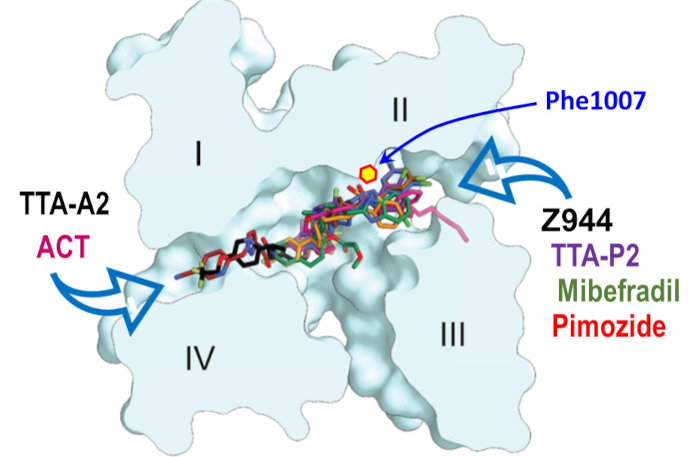A CRYO-EM STRUCTURE OF THE CAV3.2 CALCIUM CHANNEL TO DECIPHER THE PHARMACOLOGICAL PROPERTIES OF T-TYPE CALCIUM CHANNELS
Ion channels are the target of numerous drugs of therapeutic interest. Such is the case of Cav3.2 T-type calcium channels: a promising target for the treatment of chronic pain and epilepsy conditions, among others, thanks to the development of a new generation of more selective T-type channel inhibitors. In recent years, our understanding of how channel modulators interact with ion channel proteins has been greatly enhanced by the availability of high-resolution structures thanks to the cryo-EM technology. The study by the Nieng Yan’s group (Tsinguha University, Beijing) in collaboration with Amaël Davakan and Philippe Lory (team “Ion channels in neuronal excitability and diseases“) presents the cryo-EM structures of the Cav3.2 channel both alone (apo), and in complex with 4 selective inhibitors (TTA-P2, TTA-A2, ML-218 and ACT-709478). These structural data underline the importance of the inter-domain fenestrations, by which these inhibitors reach their binding site in the central cavity of the channel pore. Some of these molecules use the fenestration F2 (between domains II and III), while other molecules use the fenestration F4 (between domains IV and I). The study also highlights the importance of a phenylalanine residue (Phe1007) in the binding pocket of these inhibitors. This phenylalanine is conserved between T-type channels (Phe956 in Cav3.1 and Phe854 in Cav3.3). Overall, this study provides new structural insight into the pharmacology of T-type channels, identifying important molecular determinants of the inhibitor selectivity and affinity. This work paves the way for the discovery of new drugs targeting Cav3 isoforms, opening up new therapeutic perspectives.
This study has just been published in Cell Research.

Structural mapping of Cav3 channel inhibitor binding sites in the central channel cavity and respective positioning of these molecules in fenestrations F4 : between domains VI-I (TTA-A2 and ACT-709478) and F2 : between domains II-III (Z944, TTA-P2, Mibefradil and Pimozide).


